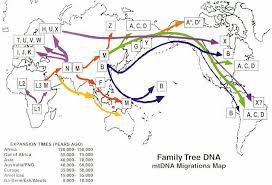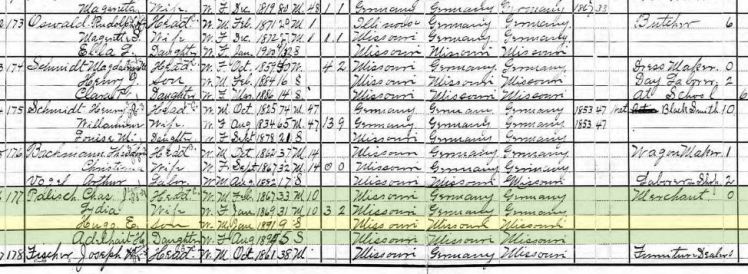
The Seven Daughters of Eve was written by Bryan Sykes, Professor of Human Genetics at Oxford University. You may not have heard of him, but you will have heard about some of the projects he’s been involved in, such as the discovery that a Stone Age body found recently in a melting glacier in the Alps has living relatives in Bournemouth, and that a 1000 year old skull in Cheddar Caves Somerset has direct descendants still living in the area – teaching at the local comprehensive school in fact. Sykes worked on both these projects, and gives full accounts of them in this book.
Sykes moved into the field of human genetics at quite an early point of the development of the subject, when genetic identification techniques were much less advanced than now. On a year’s sabbatical he was flying from Los Angeles to Melbourne to start the second of two six month placements, and landed on the Cook Islands for a short holiday.
When he broke a bone, his vacation was extended, and this gave him thinking time. The upshot was that Sykes took blood samples back to Oxford., and carried out genetic testing which proved that the South Sea Islanders had arrived on the Pacific Islands from Asia. This was surprising as it meant they had sailed against the prevailing winds, and it also confounded the theories of Thor Heyerdahl, who had argued they had come from South America, and reconstructed their hypothetical voyage on the famous Kon-Tiki expedition in 1947.
In this way genetic testing had solved one of the most controversial and problematic questions about human origins and migrations. Sykes was able to go on and fill in the details of the Polynesian migrations by sampling genetic material from across the Pacific, showing how and at what time different voyages, ending up with the last, to New Zealand, had taken place. In The Seven Daughters of Eve he sets out to do the same for Europe.
Sykes writes in a very clear and simple style that is easily accessible to non scientists. He explains complex issues well, limiting the use of mathematics and making do with quite simple diagrams. In this way he is able to tell the personal story of his scientific life, at the same time as describing the growth of genetics as a science and the story of human population diversity.
In the process Sykes explains some of the basic facts about DNA, including the nature of mitochondrial DNA. He explains why maternal DNA is the most effective for tracing human migrations: mitochondrial DNA is passed down the female line, mutations occurring rarely, but on a fairly regular pattern, allowing researchers to estimate the times that population movements took place. In contrast, nucleic DNA changes at every generation as the sperm and the egg bring together DNA from two different people.
Sykes has the knack of bringing his story to life with real examples. As well as the two mentioned in paragraph one, both of which hit the news headlines, he also spends time discussing the role of DNA in trying to discover whether any children survived the assassination of Tsar Nicholas in 1918, a story that involved genetic profiling of Prince Phillip, a distant relative. The human dimension is enhanced by his habit of writing the story as if he is thinking through his ideas, so that you are allowed to share his sense of discovery.
This was a fascinating book that combines human interest stories with scientific sleuthing, and has some of the qualities of a good detective novel in places. The main theme of the book – The Seven Daughter of Eve – is taken up more fully in the last seven chapters, each of which imagines life for one of the seven women at a different time in human evolution. This was my least favourite part of the book. It’s clear that Sykes is speculating here, and it’s hard not to see this section as a total fiction. It lacks the hard evidence of early chapters, but at the same time lacks the grit and guts that a real writer of fiction might have brought to the stories. There was some general interest here, especially with respect to the changing environment during the prehistoric period, and the likely sites of early human activity in Europe, but that could have been explained more concisely.
If you have any interest in recent findings about the history and the migration patterns of mankind, you will probably have come into contact with some of the theories and ideas based on Sykes’ work, and with the work of others in this field. Jared Diamond’s Guns Germs and Steel is possibly the best known, and certainly a fascinating account of the human story. Alice Robert’s TV programme for the BBC offers a more up to date view and one that is more easily accessible:
The Incredible Human Journey
She also has written a book on this topic, published 10 years after Sykes’ book, and so more up to date. I might read this too, or find something else on this topic, which I find really interesting, and would recommend.
Evolution, The Human Story
Advertisements Share this:




